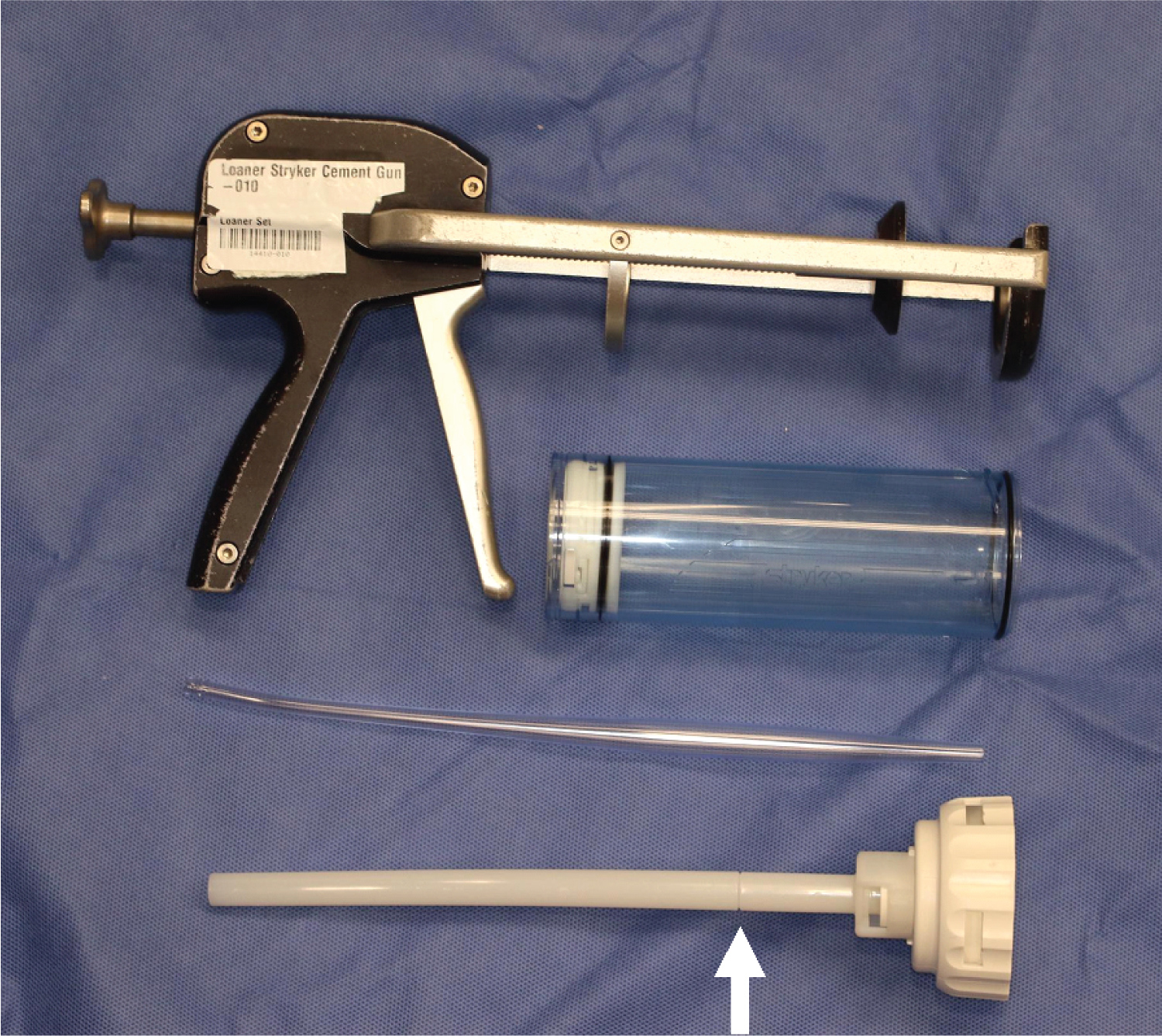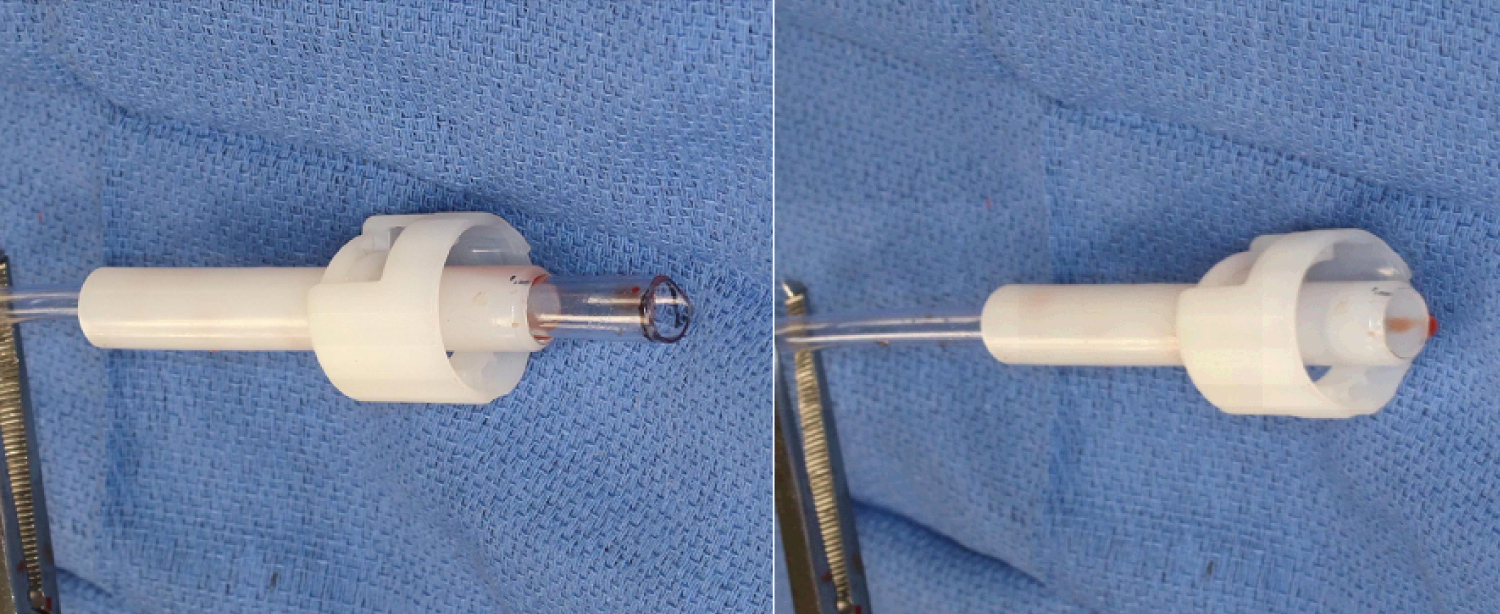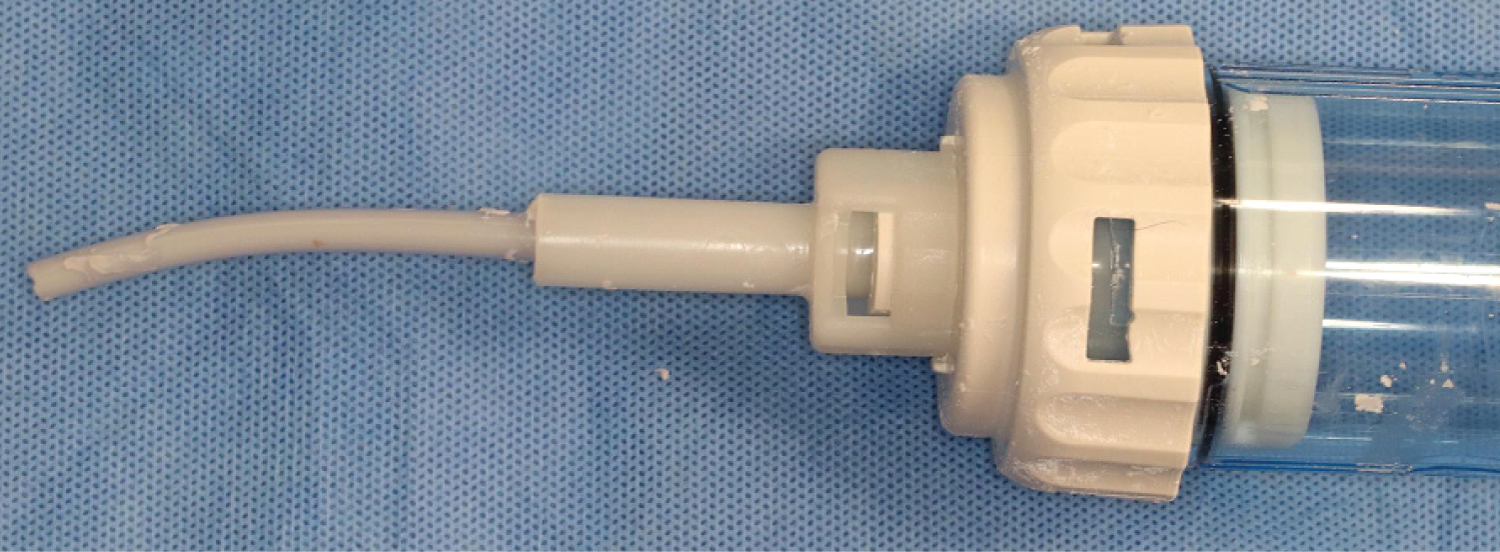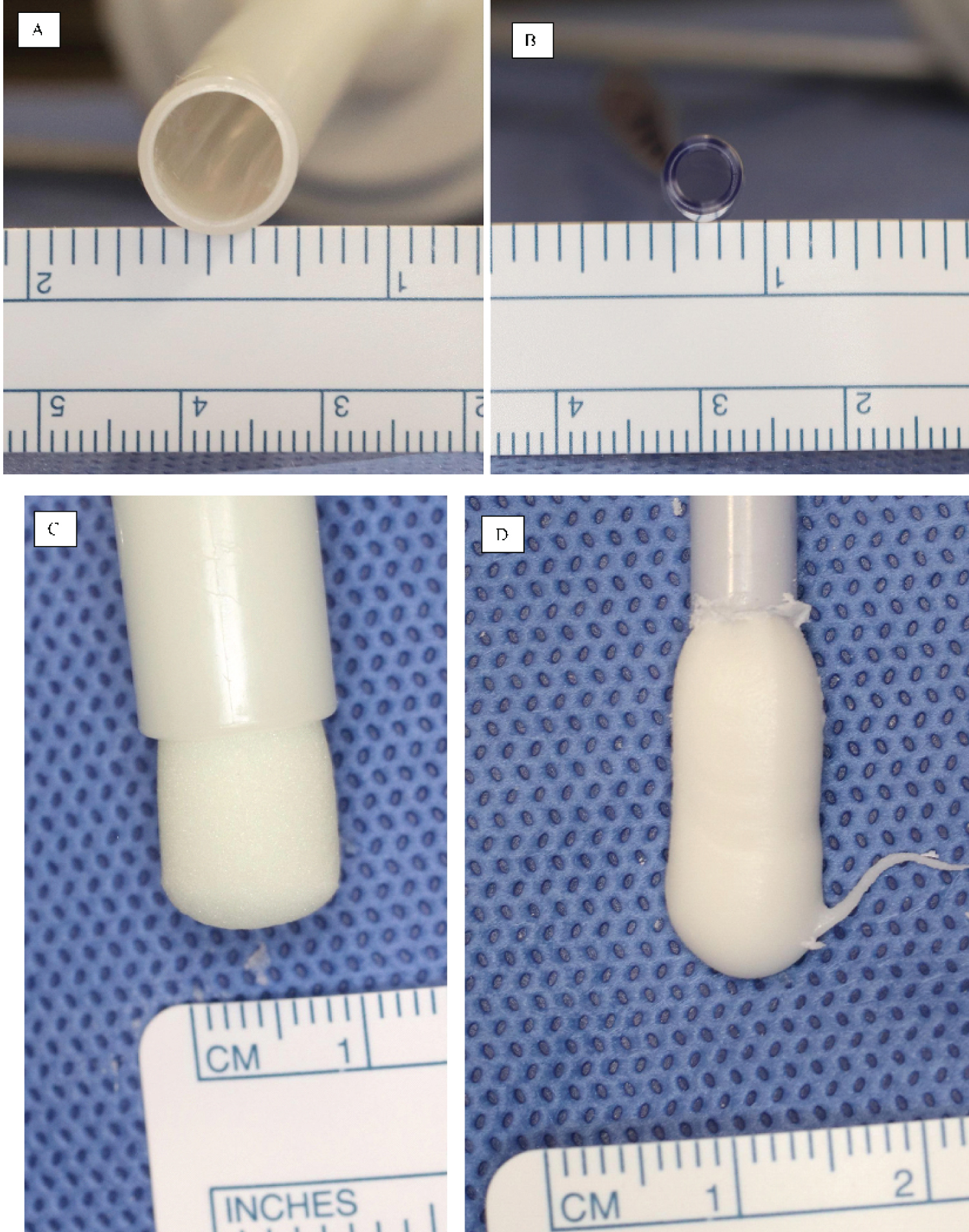Small Diameter Cement Injection: A New Cementation Technique
Introduction
Cementation is a very common practice in orthopaedic surgery. It is one of the few steps in orthopaedic surgery that is very time sensitive. Standard cement guns can access and easily fill long segments of diaphyseal bone. However filling narrow canals, such as a humerus, or a proximal femur in the presence of an existing femoral nail remain challenging due to the inability to introduce a standard cement tip into small spaces. Over the years we have tried many techniques for packing cement into a long narrow shaft, most with limited success. These have included use of a narrow "humeral" cement tip and extending the cement tip with a chest tube or large diameter rubber catheter.
Case Report
22-year-old with a BMI of 18 and a proximal humerus osteosarcoma underwent limb sparing surgery with endoprosthetic reconstruction with a segmental endoprosthesis and a reverse shoulder arthroplasty.
Method
After the tumor was excised, reconstruction commenced. After trialing, the diaphyseal stem component was selected. A standard Stryker (Mahwah, NJ) cement gun and a narrow disposable suction tip (Covidien Argyle fine Yankauer 8888501007) were used (Figure 1). The standard cement tip is broken at the notch near its base. Cutting the tip of the plastic suction tube to eliminate the side holes is optional (Figure 2). Next, we inserted the plastic suction tube, narrow end first, into the inside of the standard section tube. Importantly, inserting the tube from the inside allows the tube to withstand the high gun pressure without detaching. We marked how far the tube protrudes inside and cut the excess (Figure 3). We recommend using lower viscosity cement, e.g. Stryker Simplex (Mahwah NJ). Once this system was ready, cement was prepared and the gun was used normally (Figure 4).
Conclusion
Cementation is a common step in numerous orthopaedic subspecialties. Pressurized cement guns work well for wider bones. However, they are more challenging when used for narrower bone diameters. Our modified cement gun allowed us to easily inject cement into small cavities (Figure 5).
Corresponding Author
Felasfa M Wodajo, MD, Virginia Cancer Specialists, 8503 Arlington Blvd., Suite 400, Fairfax, VA 22031, USA, Tel: (703)-280-5390, Fax: (703)-280-9596.
Copyright
© 2020 Khalafallah YM, et al. This is an open-access article distributed under the terms of the Creative Commons Attribution License, which permits unrestricted use, distribution, and reproduction in any medium, provided the original author and source are credited.









